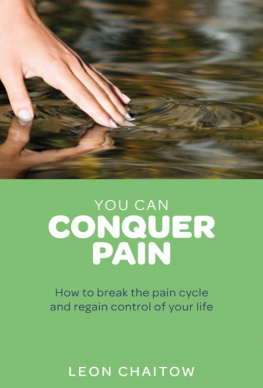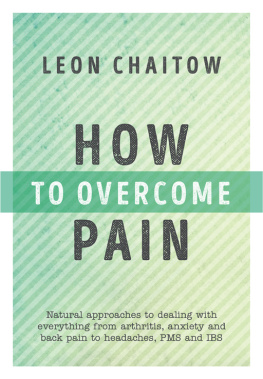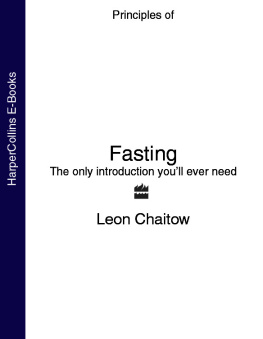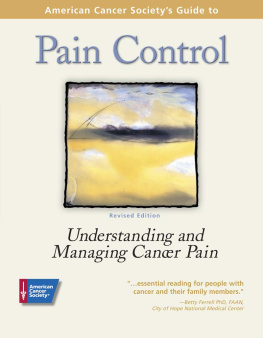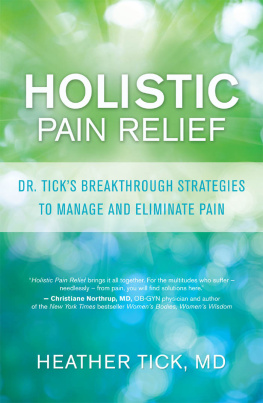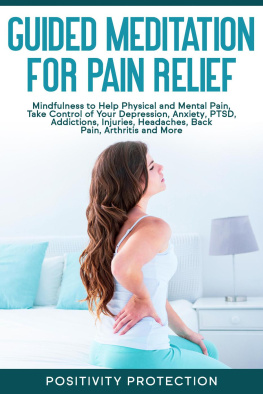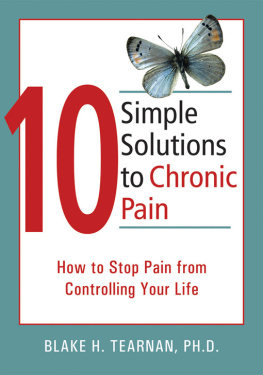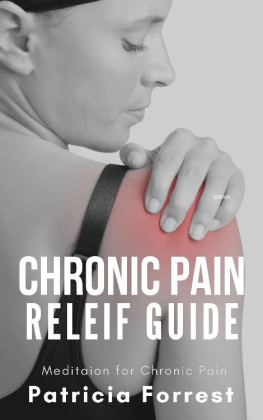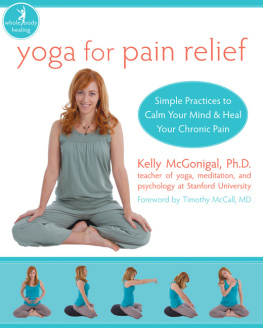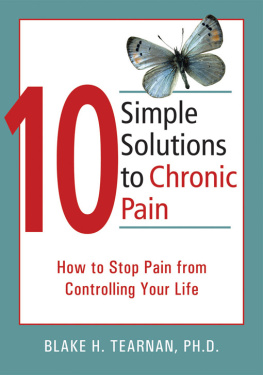Introduction
Pain is an inevitable and universal experience it affects us all at some time. Of course, the pain we most often experience is acute but transient and short-lived a self-limiting event. A cut, a bruise, a sting, even a break all are dealt with by our bodys self-repair mechanisms.
Chronic pain takes pain into another dimension altogether and can be experienced as a crushing life sentence. We need to be reminded that the bodys self-regulation (technically known as homeostasis) also operates constantly in chronic settings, just as it does in acute ones. Indeed, some of the bodys repair mechanisms such as inflammation are themselves a source of pain, even though they are helping to heal. This highlights a point that this book tries to emphasize: the more you understand about the causes and mechanisms that produce pain, the more you will be able to modify or eliminate it.
Chronic pain can be seen as a burden or a challenge. How you manage your pain is, to a very large extent, up to you. Another of the primary objectives of this book is to show you ways to approach your pain positively, enabling you to lead as normal a life as possible. A key message to that end is Hurt does not necessarily mean harm. In other words, even though it hurts, try to carry on as normal (walking, working, gardening and so on), unless you have been specifically advised to avoid particular activities. Using our pain as an excuse to retreat from performing everyday tasks leads to a spiral of inactivity, increased disability and loss of self-confidence.
An important first step in reversing such a tendency is to learn as much as possible about your pain. If you understand why you are feeling pain, and are aware of the possibility of recovery, you will manage the situation far more positively than if you do not understand the processes and suffer from feelings of anxiety and helplessness that amplify the pain.
Having worked as an osteopathic practitioner in private, as well as state-funded, practices in the United Kingdom, and also in southeast Europe, I have been fascinated to observe the differences in patients coping skills, both within and between these settings. Much of my work has been with people who are in considerable and often permanent pain, suffering from conditions such as arthritis and fibromyalgia. One clear impression I have gained, supported by medical research, is that learning about his or her own condition often helps the person in pain as much as any treatment. Knowledge is power, and understanding your pain gives you power over it.
One of my motivations in writing this book was to bring to a wider audience as much information as possible about pain, based on current research (as well as effective traditional methods), and to show what we can do to help ourselves to recover from pain, or to cope with it. The sheer range of causes, types and intensities of pain, and of ways in which it can be modified, blocked, eased or eliminated, is beyond the scope of any one book. What can be done here is to convey the essence of the pain story, giving you the knowledge that will empower you to deal with your inevitable periods of pain most appropriately. Instead of no pain, no gain, this book aims to give you more information, less pain.
Leon Chaitow D.O.
www.leonchaitow.com
Understanding Your Pain
Of all symptoms, pain is the one that is most likely to drive you to consult your doctor. Acute pain is a warning, a protective signal that alerts the defence and self-regulating mechanisms of the body that the brain senses danger. Without acute pain you would not remove your hand from a flame, nor protect yourself from other potential pain sources. When a fire alarm rings, finding the source of the fire is far more urgent than switching off the alarm. But when pain is chronic, as it often is, the causes are seldom obvious.
Understanding how chronic pain evolves, and how it may be modified, are major objectives of this book. If, as we now know, pain is in the brain, it is important to remember that what we feel, in every sense of that word, depends on how the brain interprets, and gives meaning to, the multiple messages it receives including pain messages. We can learn from most chronic pain; and we may be able to ignore it safely, or to manage or successfully treat it in a variety of ways. This book will explore all these options.

